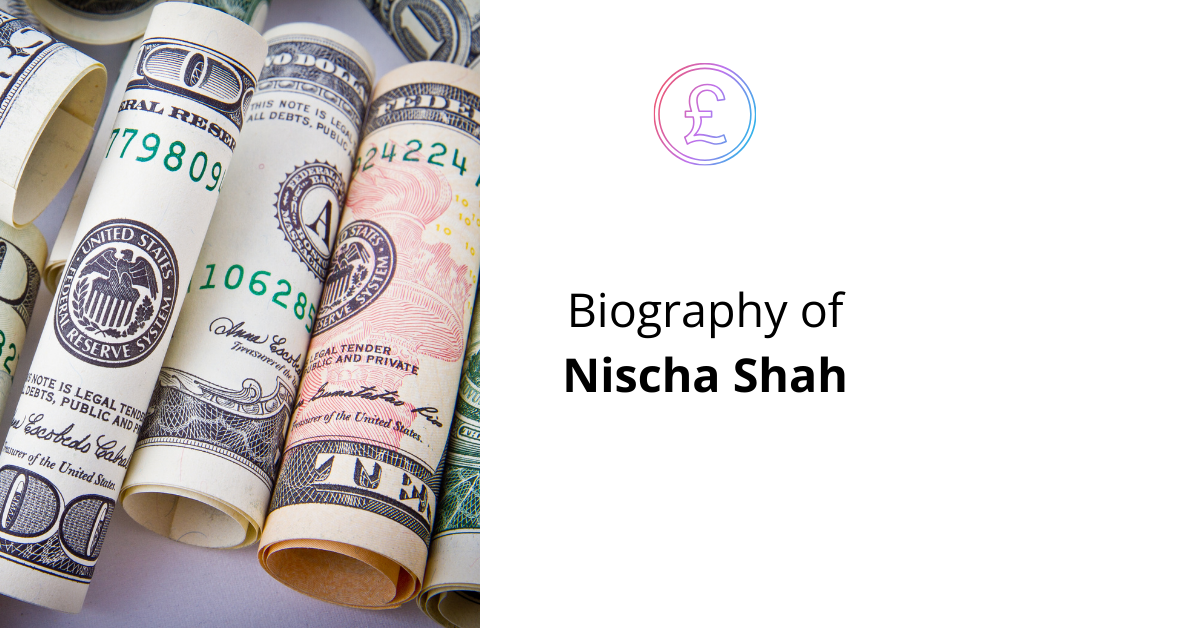Sony started as a small-radio repair workshop during the post-war period.
Now it has grown to become a multinational conglomerate corporation with revenue of 88 billion U.S. dollars.
Now, Sony is one of the world’s largest companies and they are present in 204 countries and territories.
Introduction-
As with many great companies, the beginning of Sony is very humble.
Sony was born immediately after World War II ended.
It all started on September 1945 when a small radio repair shop was started by Masaru Ibuka in a war damaged Shirokiya Department Store in Nihonbashi, Tokyo, Japan.
He had nothing except a few employees and an office which even lacked windows.
Even though the workshop was started, they did not know what to do in the initial days.
In the early days due to lack of funds Ibuka paid the salaries of his eight employees from his savings.
During World War II, Ibuka worked as an engineer for a company which tested and manufactured military equipment.
This company shut down when the war ended so he lost his job and so, later he founded Tokyo Telecommunications Engineering Corporation in Tokyo, Japan.
This company was established to help the Japanese economy and its people.
Starting small-
On 7 May 1946, Masaru Ibuka established Tokyo Tsushin Kogyo (Tokyo Telecommunications Engineering Corporation) with 8 employees and an initial capital of ¥190,000 in Nihonbashi, Tokyo, Japan.
The company faced several roadblocks on its way as they lacked the much needed machineries.
Fortunately, as the engineers of the company were very creative and innovative, they somehow complimented the lack of the equipment.
In 1958, Tokyo Telecommunications Engineering Corporation became Sony Corporation.
The golden opportunity-
Fortunately, Ibuka saw an opportunity in the radios, as during the times of World War II, the Japanese Military Police altered the home radios of the Japanese citizens to restrict them from tuning into propaganda of the enemy countries.
There was huge demand for radios as the people were interested in the global news after World War II ended.
This company produced short-wave converters (mods) which transformed regular radios into short-wave radios.
The short-wave radios could tune into any station in the world.
This workshop in addition to making radio mods also repaired the radios.
When they repaired radios, apart from receiving usual fees, they also received rice.
Later, they decided to manufacture electric rice cookers.
By this, they gained instant popularity and got featured in a popular Japanese news column.
Akio Morita was very impressed by reading this news about Ibuka’s new venture and so he joined Ibuka as a partner in the Tokyo Telecommunications Engineering Corporation.
Interestingly, a few years earlier, Morita met Ibuka in the Navy’s Wartime Research Committee during that time Morita was working as a sub-lieutenant for the Imperial Japanese Navy during the times of World War II.
The journey starts with a simple rice cooker-
The electric rice cooker is Sony’s first product.
This was a very simple product made by linking aluminium electrodes to the bottom of a wooden vessel.
The products of Sony are renowned for their excellent quality but you will be astonished upon learning that their first product, rice cooker was of sub-par quality.
The cookers failed to meet the expectations, as they mostly made overcooked or under-cooked rice.
So, the first product of Sony was a complete failure.
This company initially experienced many setbacks because of the lack of resources.
They failed because the company lacked resources by which they were not able to perform sufficient tests to ascertain the quality of the products and they sold their products in a poor economy.
As the economy was poor, the people didn’t have money to purchase their products.
During its first year, TTK made just 300 dollars as profit.
And by the 1950s, the Japanese economy recovered a bit and the Japanese had enough money in hand and they were ready to spend it.
Failing again-
The Tokyo Tsushin Kogyo (TTK) made electrically-heated cushions.
This product failed because the cushions burned blankets and mattresses.
They realised that if they continue failing like this, soon their company would shut down.
So, this realisation made them work hard and later TTK launched its brand new product, tape recorder in Japan.
Initially, they encountered several problems because this product was very new and the employees at TTK had a very little knowledge about the tape recorder.
All they knew was that the magnetic recorder requires a magnetic tape which can be created by coating a plastic tape with the magnetic material.
Necessity is the mother of invention-
They took a frying pan from the kitchen and then roasted some powdered chemicals which resulted in the ferric oxide powder.
So, the team used their innovation power to create a decent magnetic tape.
In 1950, two prototype recorders by name, G-type and A-type were released.
The G-type recorders had a recording time of one hour and were meant for industrial use whereas the A-type recorders had a recording time of half an hour and were meant for home use.
The G-type recorders were widely used in schools as teaching aids.
Entering into the world’s biggest market-
Around this time, the tape recorders in the U.S. were only employed by the news reporters to transcribe the speeches.
So, Ibuka and Morita decided to enter into the U.S market because during that time the United States of America was the biggest market on the earth.
The country was also the economic powerhouse, so every company longed to enter into America to expand their business.
Thanks to the economic policies, the middle class population in America rose thus creating a huge market.
But the Americans were building almost everything they required by themselves like electronics, cars, house appliances, etc. so, the TTK (Sony) wanted to bring a novel product into the American market so that a new trend could be set.
How transistors transformed the fate of the company?
Sony was searching for a new technology by which they can produce a novel product.
Their search ended when they came across the transistors.
Before the advent of transistors, the world relied on the vacuum tubes.
These vacuum tubes were very big in size and were also power hungry.
The vacuum tubes consumed a watt of electricity whereas a transistor consumed only a millionth of a watt.
The televisions and radios which employed the vacuum tubes at that time were very bulky.
Transistors revolutionised the field of technology and modern technology would nearly be impossible without them.
In 1948, Dr. W. B. Shockley, Dr. J. Bardeen and Dr. W. Brattain of Bell Laboratories invented the transistors.
Western Electric was the parent company of the Bell Laboratories and it held the patent rights for manufacturing the transistors.
Western Electric decided to make available the transistor technology to anyone who pays the royalties.
On one fine day, a friend in the U.S. came to visit Ibuka and he told him that the Western Electric was going to release the patent relating to transistors to the interested parties.
The major breakthrough-
When Ibuka heard this deal, he was more than happy and quickly realised that the transistors will help his company to achieve a major breakthrough.
Even though the transistors of Western Electric were revolutionary, they had several shortcomings, like they had a very low power output by which they were only suitable for machines like hearing aids.
Taking the biggest risk-
For obtaining the rights for the transistor patent, Ibuka required 25,000 dollars.
So, he decided to take the risk and borrow that huge sum of money as he lacked the funds.
Finally, Ibuka obtained the rights for the transistors of the Western Electric.
The Western Electric was very impressed by Sony upon knowing that Sony indigenously developed the tape recorder all by itself without seeking any kind of external support and so, the Western Electric granted the transistor patent to Sony after realising its calibre.
Later, the experiments on the transistors were carried out to make them even better.
Sony surprised everyone by developing the transistor radios and previously everyone thought that it is impossible for a small company like Sony to develop such a complex thing because many American companies failed in their attempts.
Attaining the breakthrough-
Sony worked very hard on this project as the future of the company solely depended on this, so it employed many expert physicists, mechanical and electrical engineers, etc.
It took a whole year for the experts at Sony to attain the breakthrough.
They increased the power output of the low-power transistors by injecting the transistors with a small amount of phosphorus.
After this breakthrough, Sony produced the super-efficient transistor radio by name, TR-55.
In 1954, the world’s first commercially manufactured transistor radio, Regency TR-1 was being sold in America.
The sound produced by this radio was very low and it lacked quality because it employed the older transistor technology.
And a year later, the co-founders of Sony, Morita and Ibuka travelled America to showcase their transistor radio, TR-55.
They were at a huge disadvantage as Americans found it very difficult to pronounce the name of the company, Tokyo Tsushin Kogyo even as their product was a way more superior to Regency TR-1.
So, this product was named as Sony.
The name Sony was formed by combining a Latin word sonus and an English slang term sonny.
Sonus in Latin means sound and sonny was used in America to address a boy.
Finally, in 1958, Tokyo Tsushin Kogyo was re-named as Sony.
Even after naming the company right, Sony was at a disadvantage because it was offered distribution only if its products were sold under the American brand names.
So, the Sony TR-55 radios were only sold in japan.
Fortunately, Sony returned again with a small but advanced radio by the name, TR-63.
TR-63 was introduced in 1957 and it soon became very popular.
The clever marketing strategy-
Sony marketed the TR-63 radio as the radio which can fit in one’s pocket but Sony soon realised that this radio was a bit bigger to fit into a normal pocket.
So, Sony made custom-made bigger pockets for their sales team and advertised that the radios could fit in the pockets.
This popularised the TR-63 radios and as a result it sold like hot cakes and it was very popular with the American teenagers who preferred to privately listen to their music.
This radio helped in Rock and Roll Music in America.
With this radio, Sony created a new segment of consumer micro-electronics.
Expanding globally-
On 15 February 1960, Sony founded Sony Corporation of America by which it expanded into the U.S.
By the 1960s, Sony was able to expand on a global scale and enter into new global markets.
It is quite interesting to know that Sony spread its success all over the world within a very short period of time.
The world’s first transistor television-
Sony made the world’s first television, TV8-301 by the transistor technology which it perfected years ago.
This television was very small, portable and light-weight.
This was a revolutionary product from Sony, as during those times the televisions were massive because they employed the big vacuum tubes in contrast with the tiny transistors used by Sony’s TV8-301 television.
The best televisions of the century-
On October 1968, Sony released its new range of televisions, by name Trinitron.
The Trinitron televisions were very reliable with great quality and were very bright as compared to any televisions during that time.
These televisions became the best televisions of the whole century and were one of the best products of Sony.
Trinitron televisions transform the perception-
Before the Trinitron televisions, the Japanese products were presumed to be of inferior quality and cheap but the Trinitron colour televisions changed the whole perception.
In 1975, Sony released its Betamax videocassette recording format.
Partnering with Philips-
In 1978, a Sony executive went to Europe to observe the Philips LaserDisc which could play audio.
Philips was the leader in the optical video discs whereas Sony possessed expertise in digital audio signal processing technology.
So, later Sony partnered with Philips to produce the Compact Disc, a digital optical disc data storage format.
The first Compact Disc was released on 17 August 1982.
The wonder of Walkman-
On July 1, 1979, Sony released the Walkman, a portable stereo cassette player.
Walkman became one of the most popular music players and it sold over 385 million units.
The Walkman music players were very convenient and easy to use.
It was one of the most iconic products of Sony and it made it possible to listen to one’s own personal music anywhere.
In October 1, 1982, Sony released the world’s first CD player, Sony CDP-101 and in 1984, its portable version was released, it was named as Discman.
Movies and music-
Sony is a very well-known name in the film and music industry.
Sony formed a joint venture with CBS Record Group, thus forming CBS Sony Record with Sony and CBS each owning half of the shares in the joint venture company.
In 1988, Sony bought all the shares in this company for US$2 billion which made Sony the sole owner of the company and this company was later renamed as Sony Music Entertainment which now publishes music and holds copyrights for them.
And in 1995, Sony also formed a joint venture with Michael Jackson to form Sony/ATV Music Publishing.
In 2016, Sony became the full owner of this company.
Today, Sony is the world’s biggest music publisher.
In September 25, 1989, Sony acquired Columbia Pictures Entertainment along with TriStar Pictures for $4.8 billion dollars.
Sony made many popular movies like Spiderman, Skyfall, The Da Vinci Code etc.
Pioneering with the PlayStation-
PlayStation introduced 3D gaming.
On November 16, 1993, Sony Interactive Entertainment was established.
And a year later, on 3 December 1994, the Sony PlayStation was released.
The Sony PlayStation revolutionised the gaming experience.
PlayStation became the first ever video game console to be sold over a hundred million units.
In 2000, Sony released the PlayStation 2 and it eventually became the best-selling home console of all time with over 155 million units worldwide.
On December 12, 2004, Sony released The PlayStation Portable (PSP) as an answer for the Nintendo DS.
And on November 11, 2006, the PlayStation 3 was released.
On November 15, 2013, PlayStation 4 was released and on October 13, 2016, PlayStation VR headset was launched.
Mobiles and bank-
In 2001, Sony established its own bank, Sony Bank and its mobile division by name, Sony Ericsson mobile by establishing a joint venture with Ericsson, a Swedish multinational networking and telecommunications company.
And later in 2012, Sony bought the shares in the Ericsson mobile and renamed the company as Sony Mobile Communications.
The world’s first OLED television-
Sony released the world’s first OLED television, XEL-1 in 2007.
And in 2011, they also released the 4K televisions (Ultra-high-definition televisions).
The majority of the revenues for Sony are generated from its game and network services, financial services, home entertainment and sound, pictures, semiconductors, music, mobiles, imaging products and solutions, etc.
Sony is headquartered at Sony City, Minato, Tokyo, Japan and has 35 subsidiaries which are involved in a wide range of businesses.
Feedback from readers is highly appreciated; it helps me to deliver better results to you.
Infographic-

Frequently Asked Questions (FAQs)
How Sony started?
The founding story of Sony is very humble.
Sony was started as a small radio repair shop in a war damaged department store in Nihonbashi, Tokyo, Japan.
Initially, Sony’s office didn’t have even windows and only had a few employees.
How Sony got its name?
Sony was initially known as Tokyo Tsushin Kogyo.
But when this company entered into the United States, many Americans found it difficult to pronounce this name.
So, in 1958 Tokyo Tsushin Kogyo was re-named to Sony.
The word Sony is a combination of a Latin word sonus (meaning sound) and an English slang term sonny (this word is used to call a young boy).
What was Sony’s first product?
Electric rice cooker was Sony’s first product.
This product was a failure because it couldn’t cook rice properly.
How did Sony become successful?
Sony is one of the world’s most successful conglomerates and the reasons for its success are-
• Sedulous founder- Masaru Ibuka, a co-founder of Sony is the man behind the success of Sony. He persisted even when he didn’t have sufficient funds, equipment, etc.
• Perseverance- The first few products of Sony like electric rice cooker and electrically-heated cushions failed but they worked hard and persevered to rectify their mistakes. Sony eventually made high quality products like TR-63 radio which became successful.
• Expansion- Sony was not only confined to Japan but expanded to 204 countries. It also grew to offer many products and services like televisions, Compact Discs, Walkman, banks, etc.
• Research and development- Sony’s rigorous R&D helped it to attain its very first breakthrough of increasing the power output of transistors and producing the TR-55 transistor radio.
• Great partnerships- Sony partnered with many great companies like Philips, ZMP INC., etc. to produce products.
What is Sony best known for?
Sony is best known for its Walkman and PlayStation.
How Sony makes money?
Sony makes money from its many subsidiaries and diverse businesses which include-
• Sony Electronics Corporation, Sony’s electronics business unit.
• Sony Semiconductor Solutions Corporation. This offers image sensors, LSIs, etc.
• Sony Pictures Entertainment is involved in the entertainment business.
• Sony Music Group.
• Sony Interactive Entertainment.
• Sony Financial Holdings Inc., etc.
Who owns Sony?
Sony is owned by the Sony Corporation headquartered in Kōnan, Minato, Tokyo.
Why is Sony the best brand?
Sony is the best brand because it is one of the world leaders in consumer and professional electronic products, video games and video game consoles and records.



0 Comments